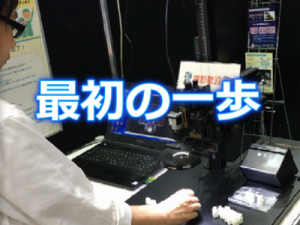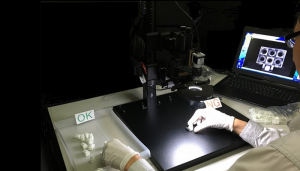HOW DO YOU MAKE AN OK DECISION?
I am often asked that question.
The answer is as follows.
Step1. Memorize several good products in advance.
The upper and lower limits are determined by statistical processing (mean ±3σ) of the luminance (density) of each pixel.
-3σ accumulation is the lower limit image and +3σ accumulation is the upper limit image
CANDIDATES THAT ARE WITHIN THIS RANGE ARE OK, AND CANDIDATES THAT ARE OUTSIDE THIS RANGE ARE NG.
Step2. Re-evaluate the luminance and area of NG candidates
DETERMINE LIMITS ON WHETHER NG CANDIDATES ARE TRULY NG OR OK BASED ON THE ACTUAL NG CRITERIA
Step3. Inspect the object to be inspected
If OK appears to be NG, return to Step 1 or 2.
That is all.
To add,
APPROACH FROM OK
THERE IS NO RISK OF NG BEING LEAKED IN THIS WAY.
ON THE OTHER HAND, APPROACHES FROM NG
IF NG WAS LEARNING AFTER THE LEAK, IT WOULD INDEED BE DANGEROUS, WOULDN'T IT?
therefore
We use a simple concept, not so much deep learning, to perform visual inspections.


